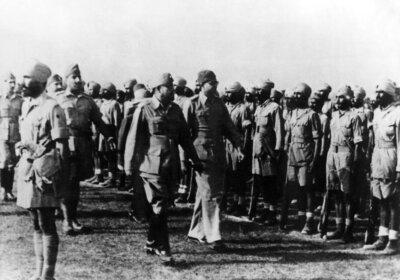National Science Day is celebrated in India on 28th February every year to commemorate the discovery of the Raman Effect by Indian physicist Sir Chandrasekhara Venkata Raman on 28th February 1928. This discovery was a significant breakthrough in the field of science and led to Raman receiving the Nobel Prize in Physics in 1930.
The first National Science Day was celebrated in India in 1986, and since then, it has been observed every year to create awareness about the importance of science and its role in the development of our society.
The theme for National Science Day 2022 in India was “Science for Sustainable Development and Mitigation of Climate Change”. On this day, various programs and events such as science exhibitions, workshops, seminars, and lectures are organized across the country to promote scientific temper and create a scientific outlook among people.
Let Us Look At The Life Of Sir CV Raman
Chandrasekhara Venkata Raman, also known as C.V. Raman, was an Indian physicist who is best known for his groundbreaking discovery of the Raman Effect. His discovery revolutionized the field of physics and earned him worldwide recognition, including the Nobel Prize in Physics in 1930.
Early Life and Education
C.V. Raman was born on November 7, 1888, in Tiruchirappalli, India. He was the second of eight children born to R. Chandrasekhara Iyer and Parvathi Ammal. His father was a professor of mathematics and physics, and his mother was a homemaker.
Raman displayed a keen interest in science from a young age, and his father encouraged his interest by teaching him physics and mathematics. Raman went on to earn a Bachelor’s degree in Physics from Presidency College in Madras (now Chennai) and later earned a Master’s degree in Physics from the University of Madras.
Career
After completing his education, Raman began his career as an Assistant Accountant-General in the Indian Audit and Accounts Service. However, he soon realized that his true passion lay in the field of science, and he resigned from his job to pursue his interest in research.
Raman began his research in the field of acoustics and optics and published his first research paper on the subject in 1915. In 1921, he became the first Indian to be appointed as the Palit Professor of Physics at the University of Calcutta.
In 1928, Raman made his groundbreaking discovery of the Raman Effect while studying the scattering of light in liquids. He discovered that when a beam of light is passed through a liquid, a small fraction of the light is scattered in a different direction, and the scattered light contains information about the chemical composition of the liquid. This discovery opened up new avenues for research in the field of optics and led to Raman being awarded the Nobel Prize in Physics in 1930.
Raman continued to work on various aspects of physics throughout his career, including the study of crystals and the behavior of light in different media. He also founded the Indian Academy of Sciences in 1934 and served as its president from 1935 to 1947.
Legacy
C.V. Raman is considered one of India’s most prominent scientists and a pioneer in the field of physics. His discovery of the Raman Effect has had a profound impact on the field of optics and has led to numerous advancements in science and technology.
In recognition of his contributions to science, Raman received numerous awards and honors throughout his career, including the Nobel Prize in Physics, the Hughes Medal from the Royal Society of London, and the Franklin Medal from the Franklin Institute in Philadelphia.
Conclusion
C.V. Raman’s life and work continue to inspire scientists and researchers around the world. His dedication to science and his groundbreaking discoveries have left a lasting impact on the field of physics and have helped to shape our understanding of the world around us.
For more such historical facts and updates stay tuned to Panchayiti























Leave a Reply